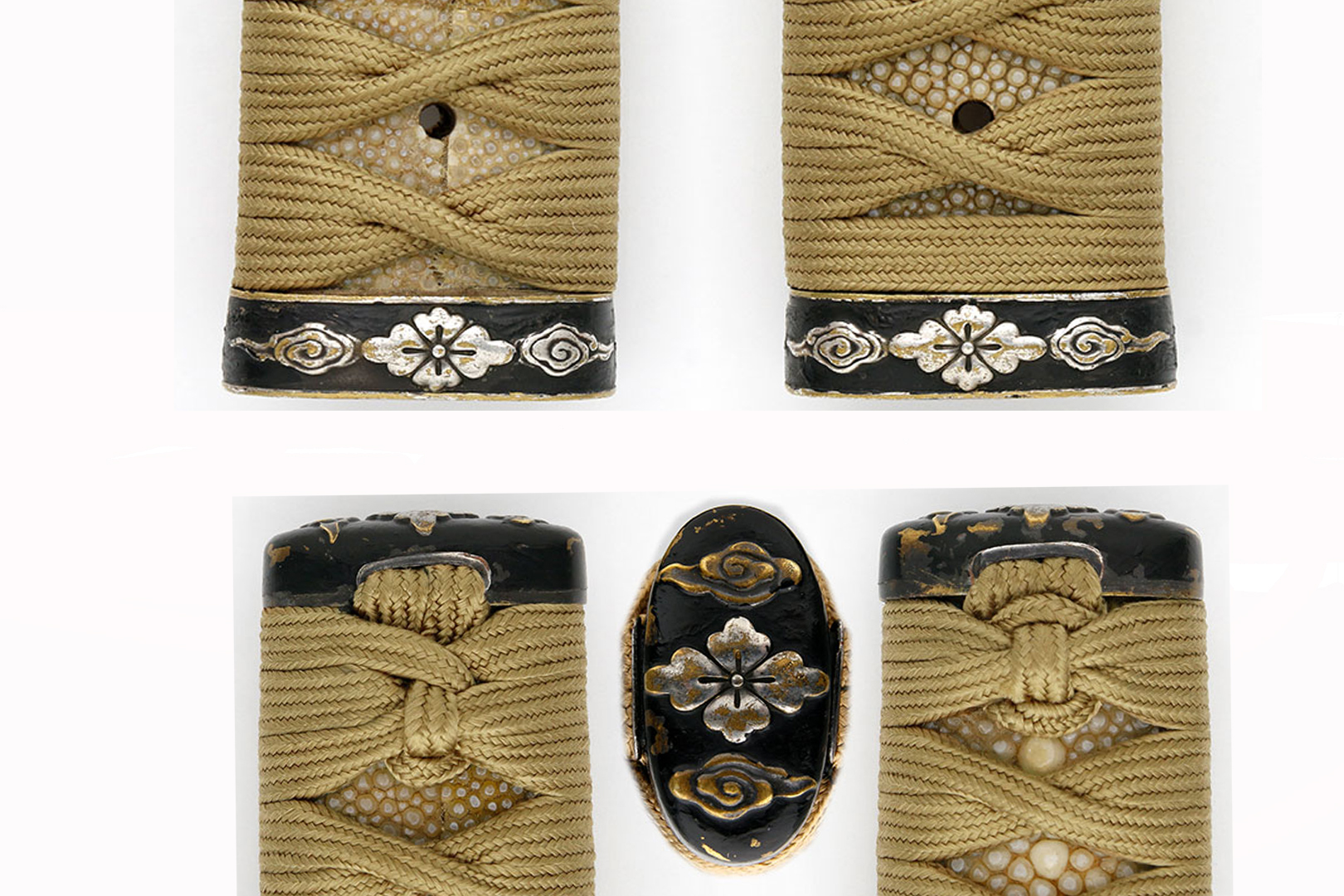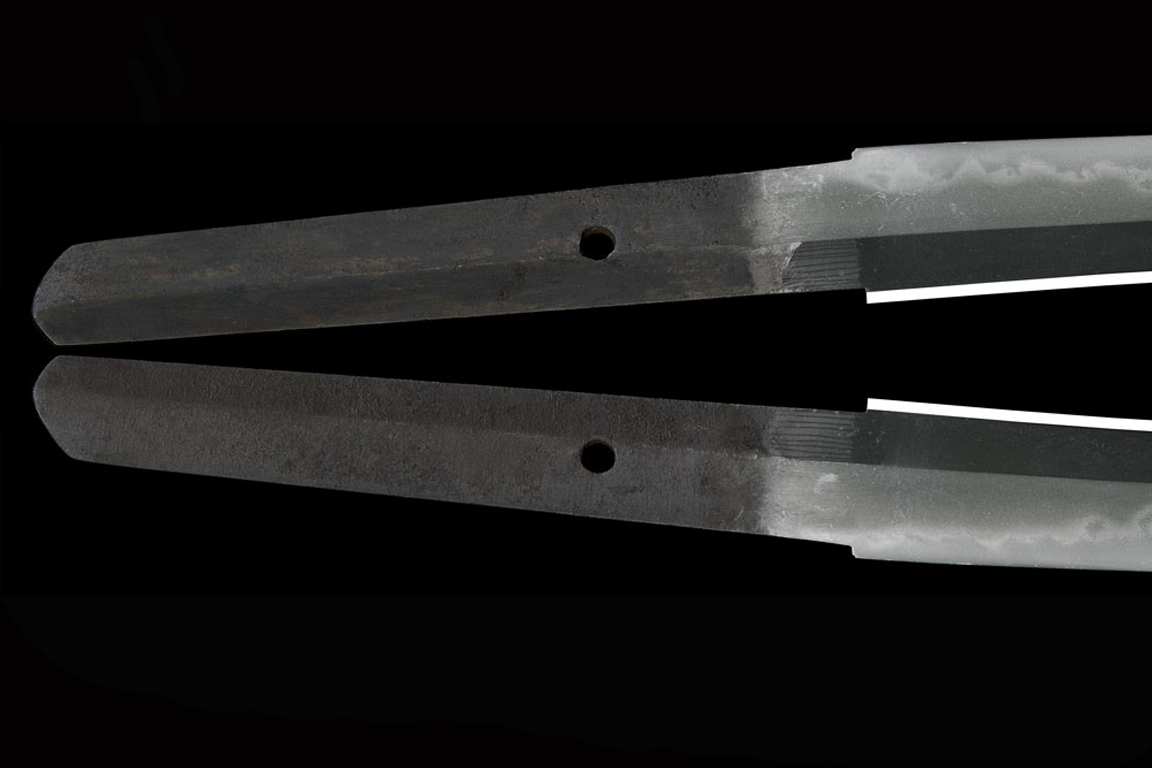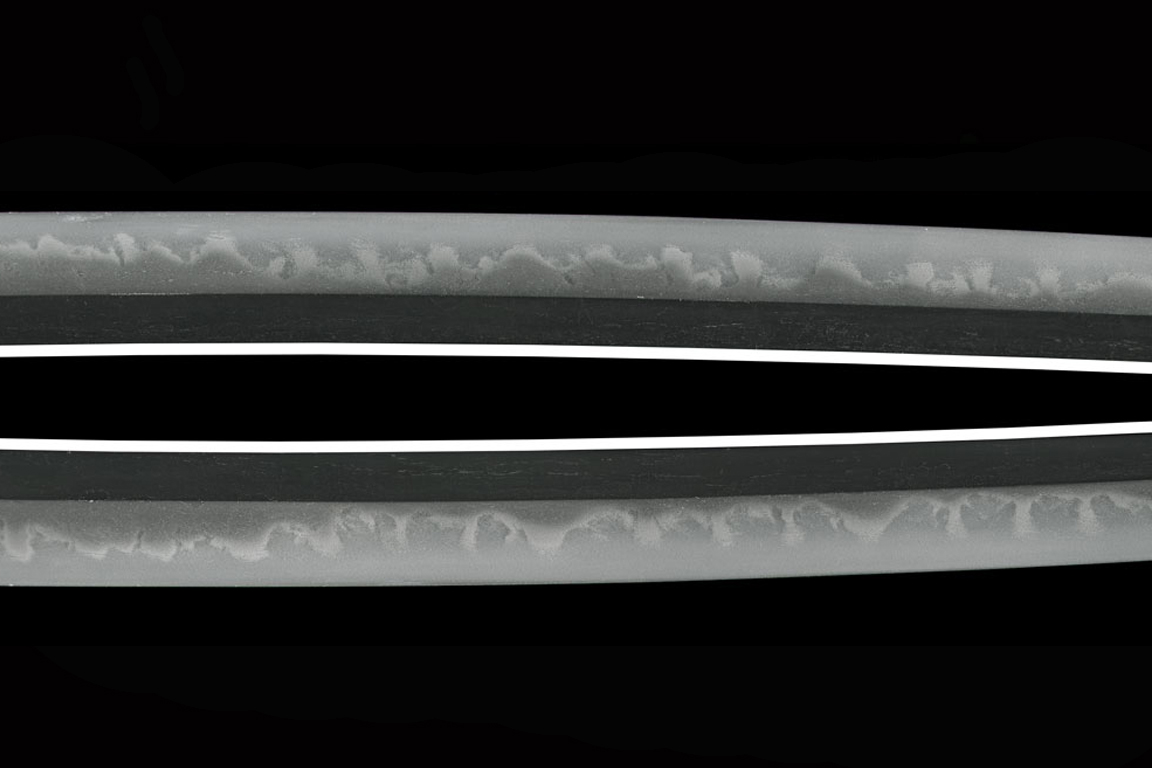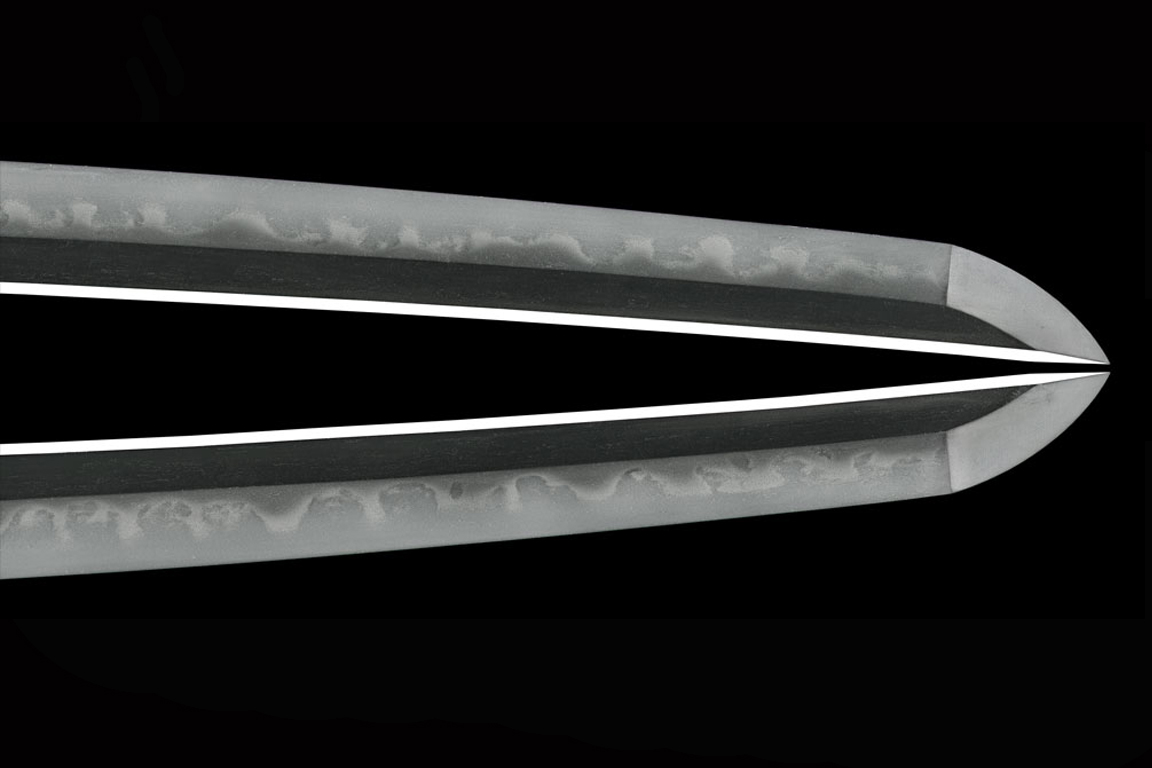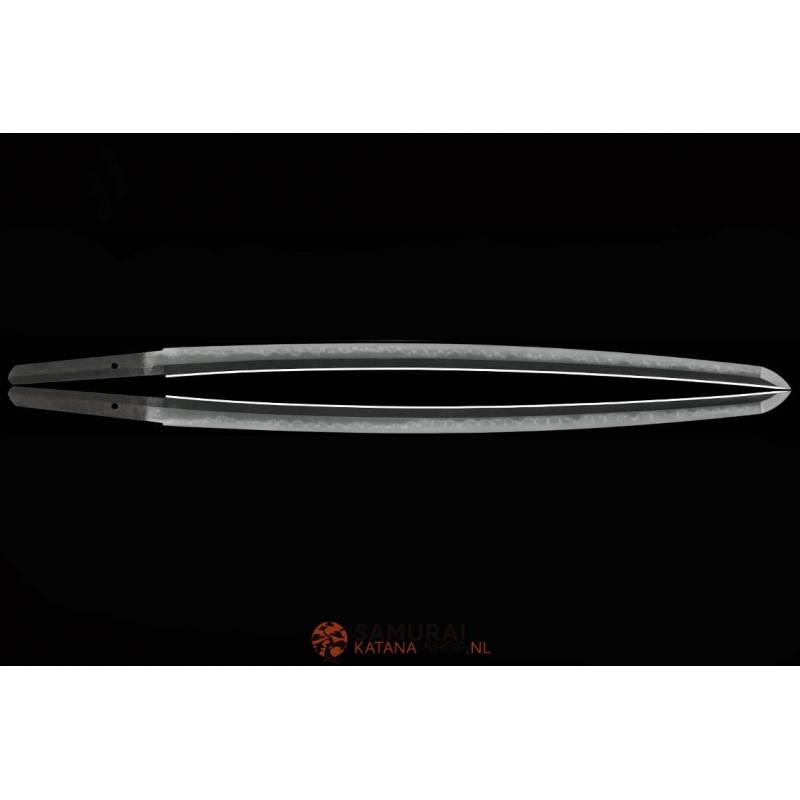


















An antique Katana with NBTHK Hozon from Koto (late Muromachi period) with a breathtaking Koshirae and a beautiful Choji Gunome Midare blade for the true lover of Japanese swords.
Sold!
A real antique Japanese Katana by Fujiwara Takada from Koto, the Muromachi period. The famous Takada School was founded in Takada in Ohita Prefecture. The founder was by Takada Tomoyuki so around the Nanbokucho period. (1334-1338 AD). Tomoyuki learned the basics of blacksmithing at the Bizen School in Bizen Prefecture. The swords from this Takada school for the Edo period are called Fujiwara Takada and that includes this nihonto.
This Katana comes from the Sengoku period around 1467 century to 1596. In this troubled period of Japan in which many wars were fought, swords were in great demand by the very powerful daimyos. A daimyo belonged to the samurai class and was a Japanese warlord. The Fujiwara Takada school supplied many Japanese swords for the island of Kyushu, where fierce battles were fought for power between the feudal lords. Very high quality swords came from the Takada school and the skilled sword forging technique was passed down from generation to generation. The tamahagane came from the mountain sobo Katamuki near Takada was abundant, partly because of this the school could flourish well.
This Japanese sword with a blade of tamahagane is still in excellent condition. A flowing torii-sori or curvature of the blade. A mumei tang with suriage and machi okuri. Because the swords in koto were often much longer and the way of waging war changed quickly, many swords were sometimes made slightly shorter. Despite the blade being wide and thick, it feels very well balanced. A ko-itame hada with a lot of veins in jinie. The hamon is with an attractive gunome and choji midare. Choji is a very old hamon pattern that resembles a clove and is highly valued for its aesthetic properties. The boshi of hakigake resembles a flame because of its shape and brings a lot of life to this blade.
The suguta is shinogi zukuri with 1 mekugi-ana with a nakagojiri in ha agari kurijiri.
koshirae
Personally, I love the contrasting colors of the ito and sageo against the incomparable black Aogai Chirashi Saya with sparkling pearls.
The round copper tsuba is made in Tachiage style. A soothing view of clouds with a flowing river on one side. On the other side you can admire the Japanese crane (Grus japonensis) and the Japanese knotweed plant.
The fuchi and kashira are in shakudo with a family crest (mon) and an aesthetic vortex. The menuki are made of shishi or lion dog in gold color and contrast nicely with the tsumami tsuka. The graceful kashira in gold color clearly indicates that this sword has been skilfully finished and has rightly obtained the NBTHK papers in its entirety.
Specifications:
Nagasa : 64 cm
Sori :1.4 cm
Width at the hamachi : 2.95 cm
Width at the Kissaki : 2.10 cm
Kasane : 7.5 mm
Weight: 675 grams
A unique opportunity to buy a real one-off Japanese Samurai Sword. A unique and beautiful piece of history from Japan and what an honor to be able to sell this. This Nihonto deserves a place somewhere where it will be treated with honor and respect.
Apart from the fact that this is a great sword to display in your home, I can tell you with certainty that it is a good investment and will hold its value. The NBTHK has provided this sword with the necessary papers. This Nihonto comes with NBTHK Hozon Token papers.
You can read more about it here, if a katana gets a Hozon certificate, this is already exceptional
Including Oshigata. Oshigata is a drawing of the blade which records all the metallurgical activities of the blade so that a good picture is created of the unique katana.
This is an antique sword and is therefore subject to the test of time and this will be visible in some places.
Of course provided with NBTHK Hozon Token papers which guarantee the authenticity.
Never touch the katana with bare hands
Do not breathe in the direction of the blade
Do not rest the Katana on the kissaki
When indicating the katana do not point the point and the cut towards the indicated person
When throwing up the katana it is recommended to do this in the saya
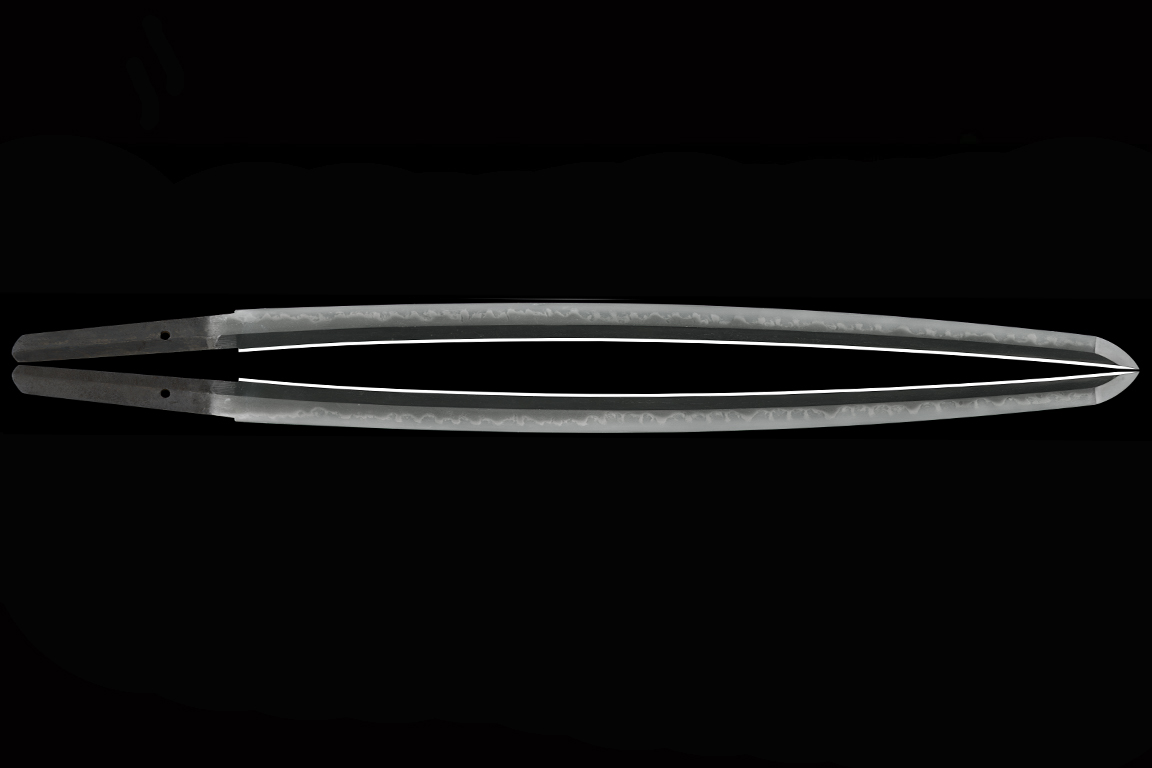
%20Katana%20Samurai%20Zwaard%20NBTHK%20antiek.jpg)
